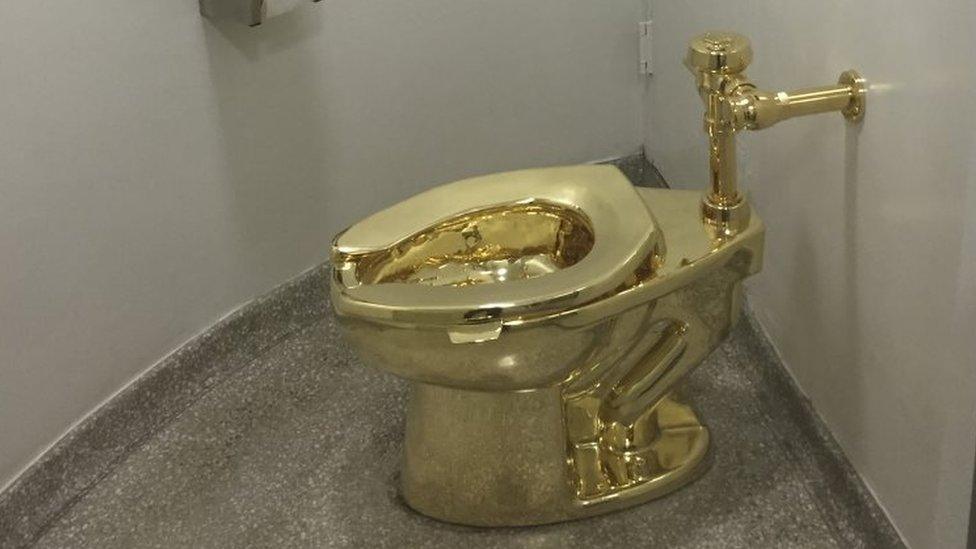Photos reveal Blenheim Palace hosted D-Day landing craft tests
- Published
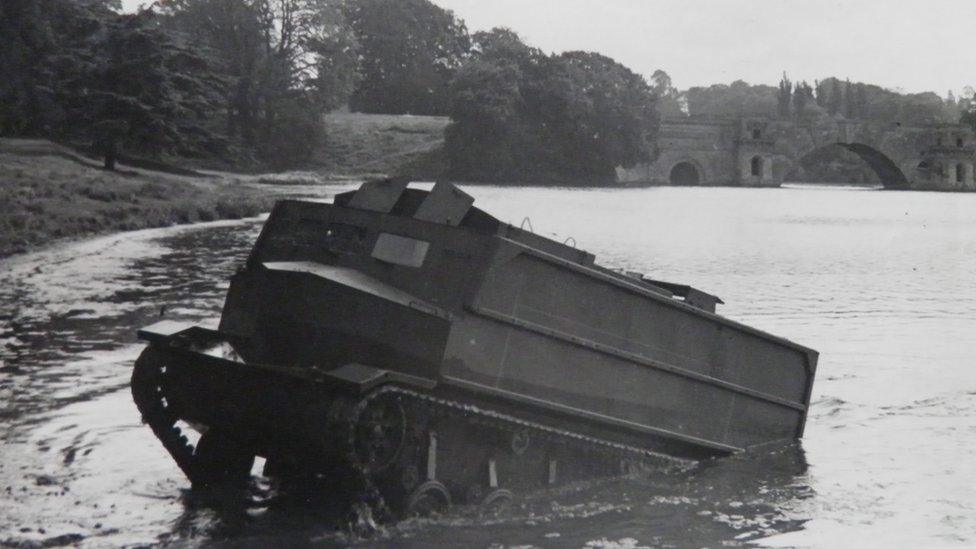
The photographs are part of Blenheim Palace's online celebrations for VE Day
A series of photographs from private family albums have revealed Sir Winston Churchill's birthplace was used as a secret testing ground for landing craft in the run up to D-Day.
The images show two amphibious vehicles being put through their paces on the picturesque lake at Blenheim Palace.
They were tested as part of Operation Neptune, a British initiative to develop its own landing craft.
The photos will feature in the palace's online celebrations for VE Day.
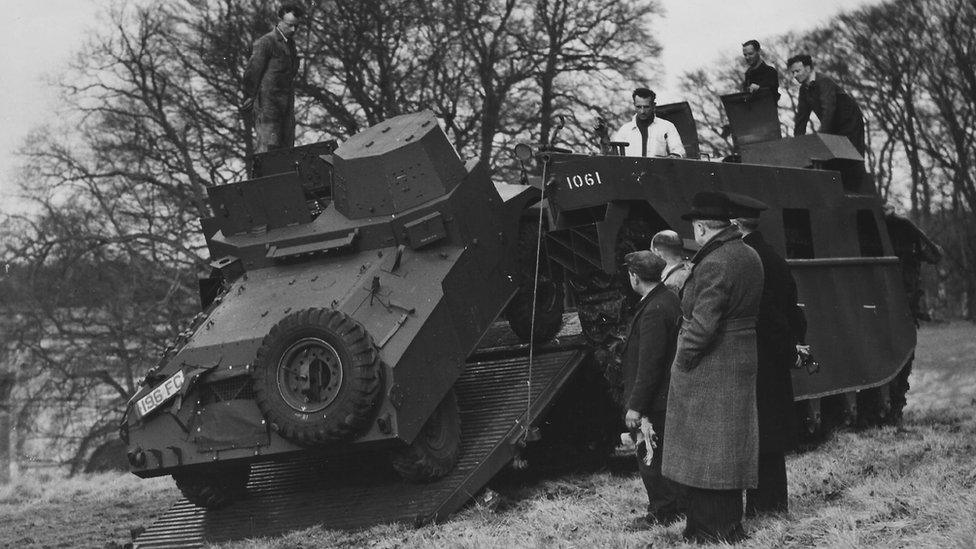
Neither of the craft were used in D-Day landings, but one was later used in the Middle East
Blenheim said it believed its estate in Woodstock, Oxfordshire, was chosen for testing due to the proximity to the Morris car factory in Oxford where the vehicles were manufactured.
The estate's relative privacy and "the fact it was so familiar to Churchill himself were also likely to have played a part in the decision to use it for testing", it added.
Antonia Keaney, the stately home's researcher, said the photographs offered an "absolutely fascinating glimpse into Blenheim Palace's clandestine role" during World War Two.
"The secrecy surrounding the trials was such that, even today, it is extremely difficult to find out many details of exactly what took place and when," she said.
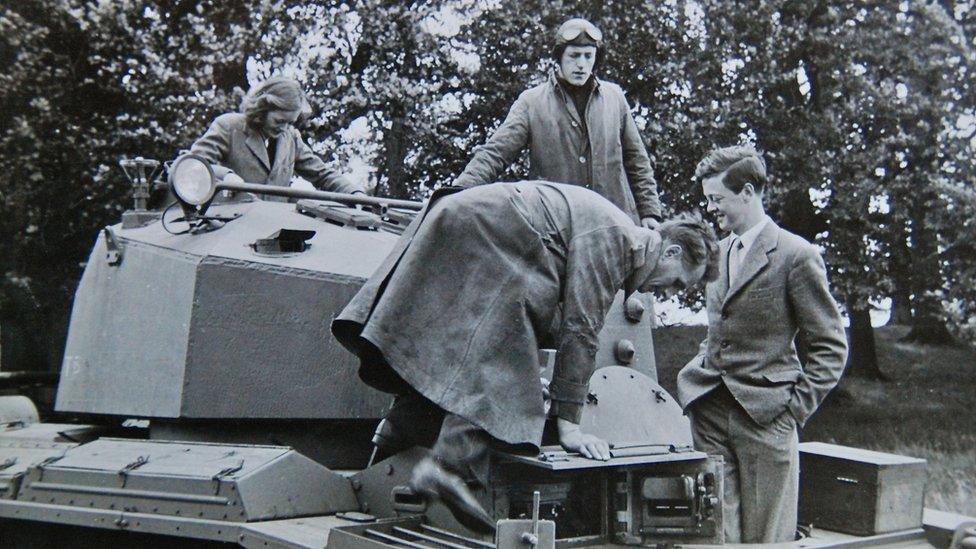
The 11th Duke of Marlborough, Lord Blandford, and his sister Lady Rosemary jumped on to one vehicle
The images show two different prototype craft, named the Argosy and the Neptune, being tested ahead of Operation Overlord.
One photo features the 11th Duke of Marlborough, Lord Blandford, and his sister Lady Rosemary on board an anti-aircraft tank.
The palace said it believed Churchill was "particularly interested in the programme, as he did not want to be entirely beholden to the US to provide all the amphibious vehicles for the historic Normandy landings".
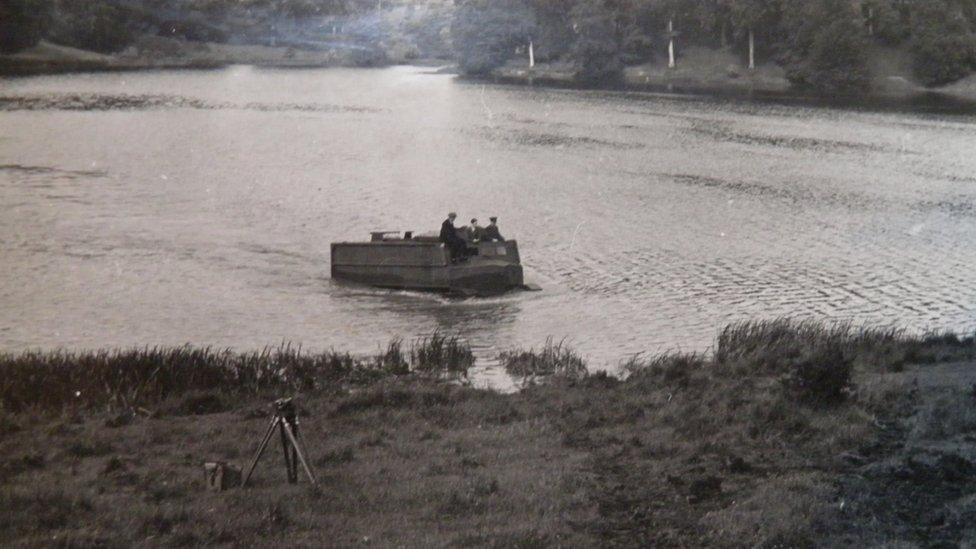
Antonia Keaney said the photos offered a glimpse into Blenheim's "clandestine role" during the war
Neither vehicle took part in the D-Day landings, although the Neptune was later used in the Middle East.
Blenheim's lake was also used as a secret location to trial HMS Conundrum, a 250-tonne floating drum which was used to lay miles of oil and fuel pipelines under the Channel ahead of D-Day.
The estate became the temporary headquarters for MI5 after its London base was bombed in September 1940.

Sir Winston Churchill's father described the Blenheim vista as the "finest view in England"
.
- Published26 March 2020
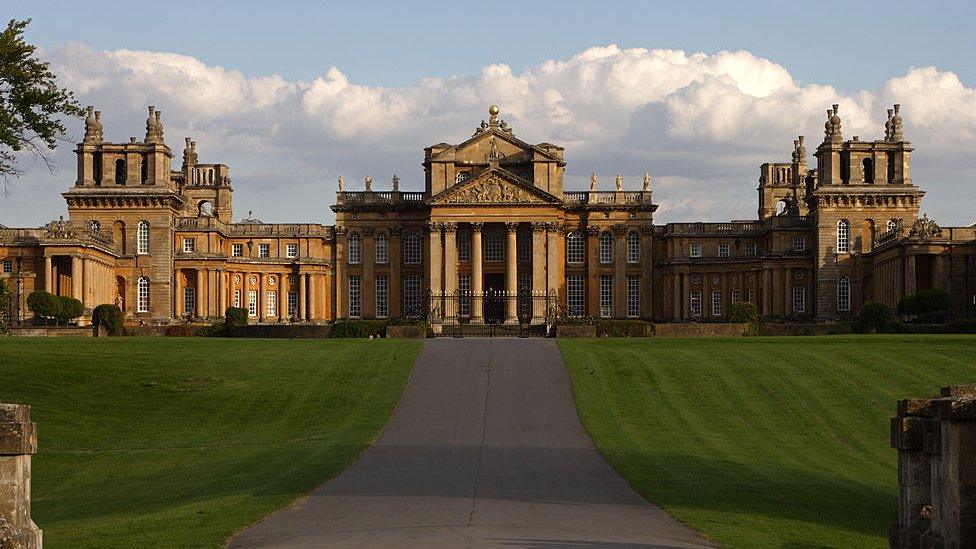
- Published16 January 2019
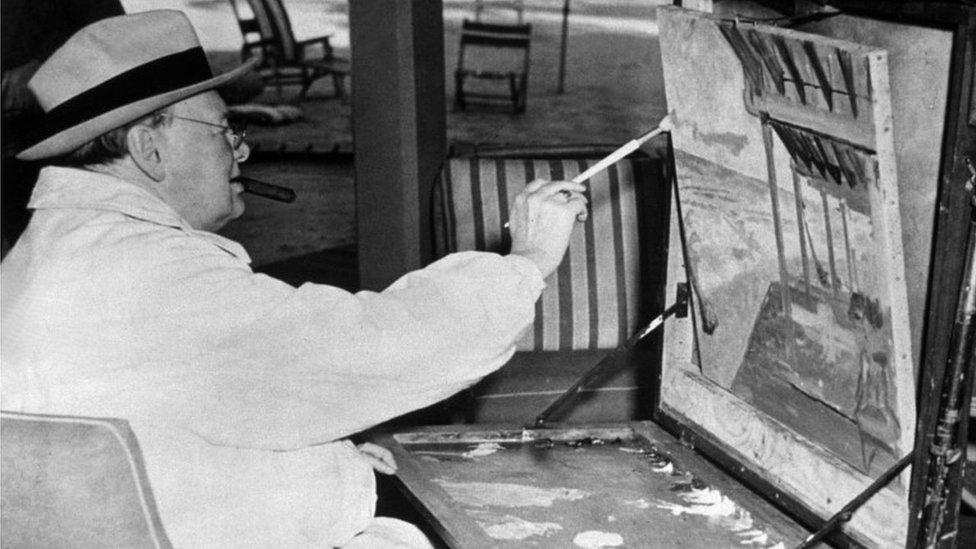
- Published13 September 2017
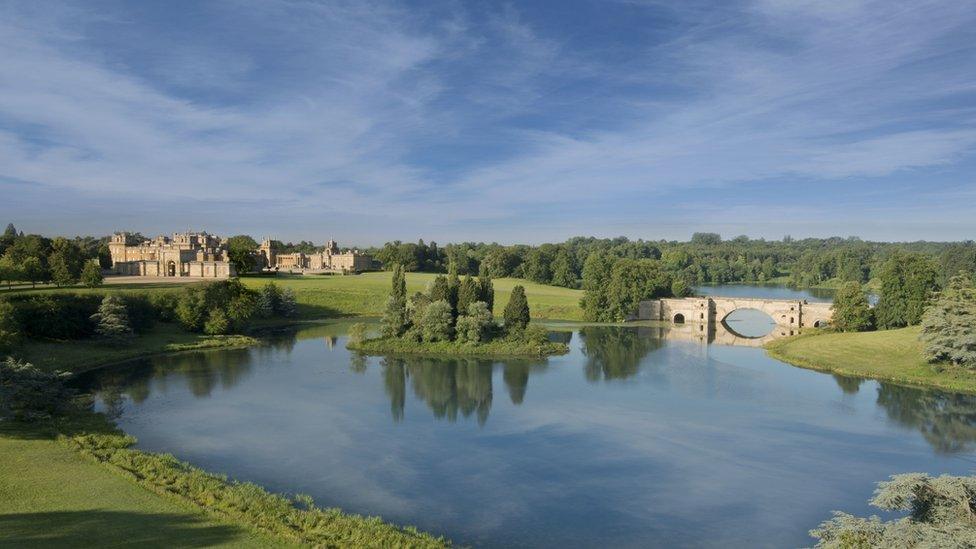
- Published16 September 2019
